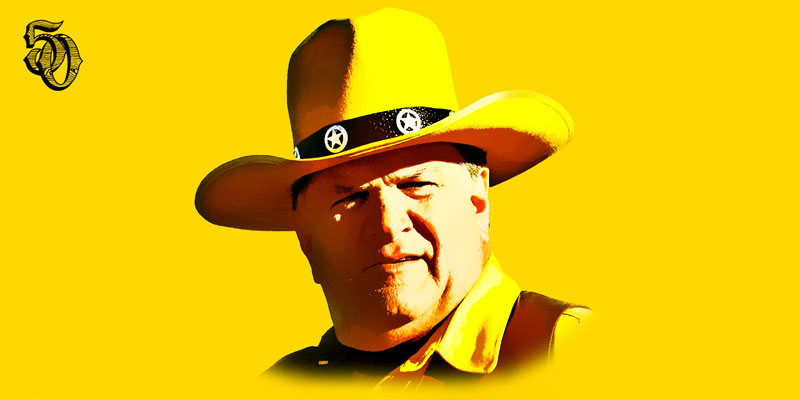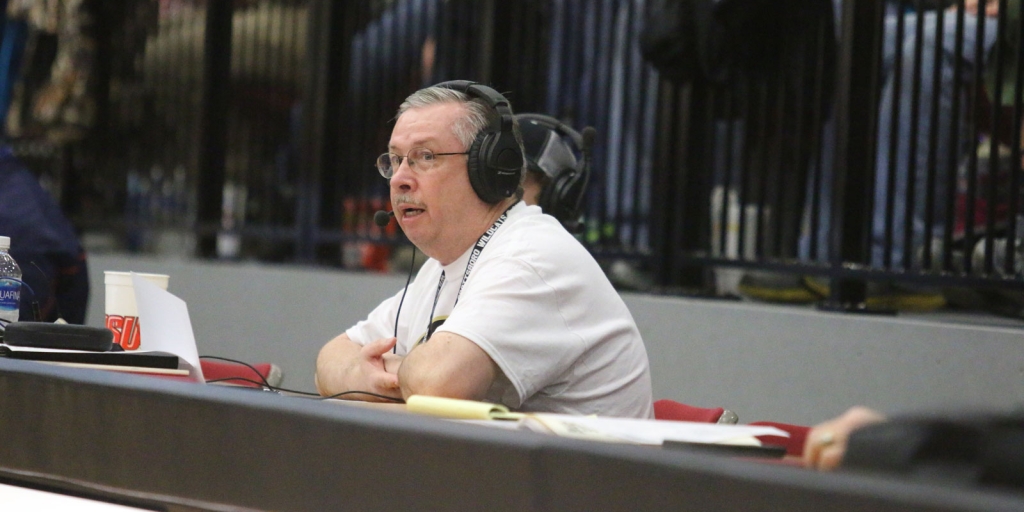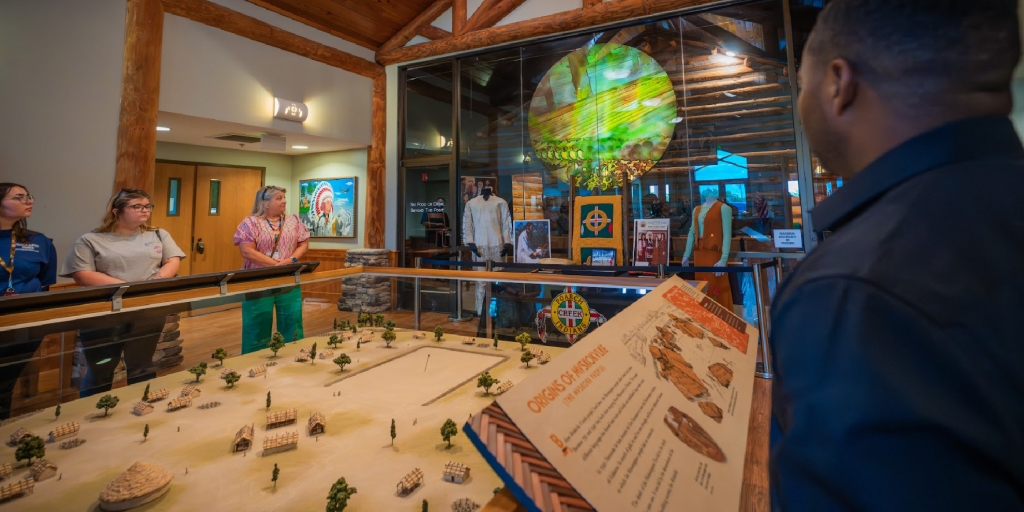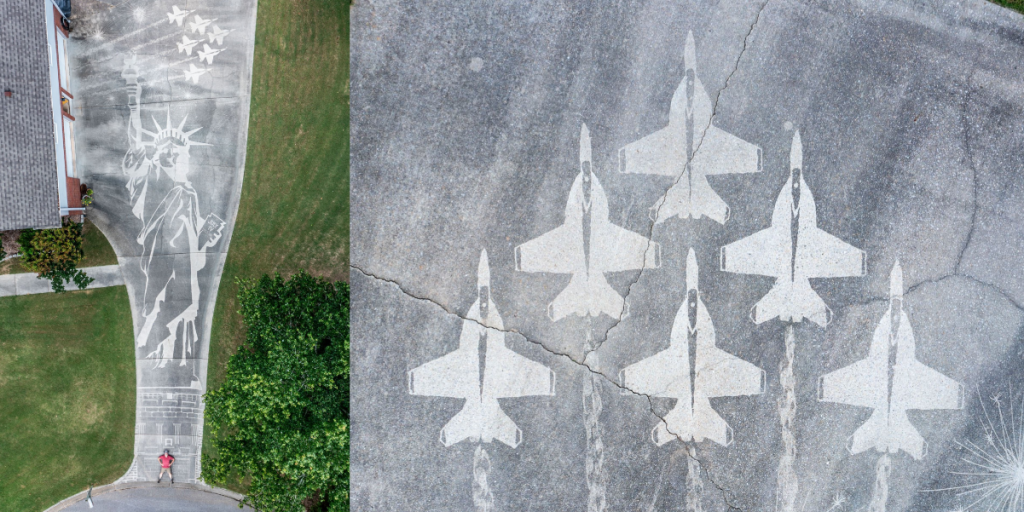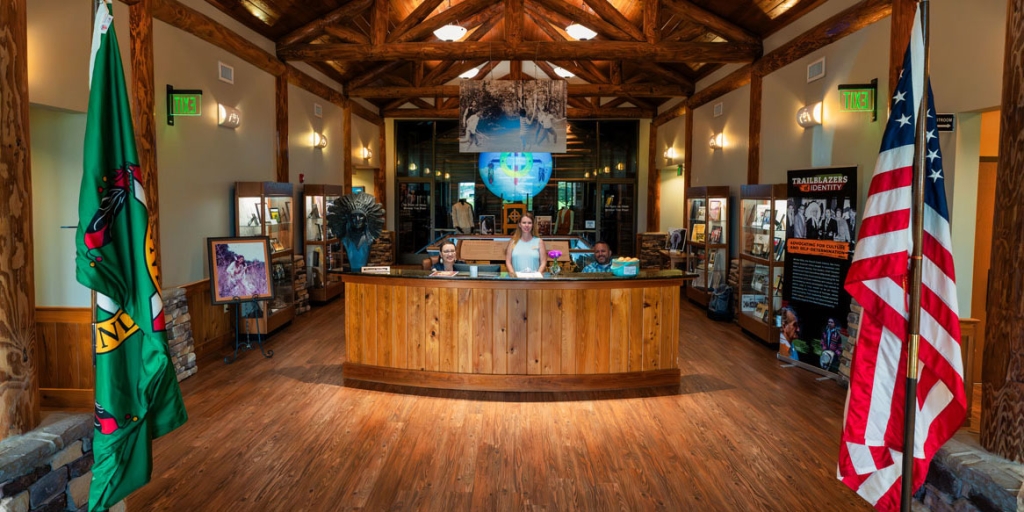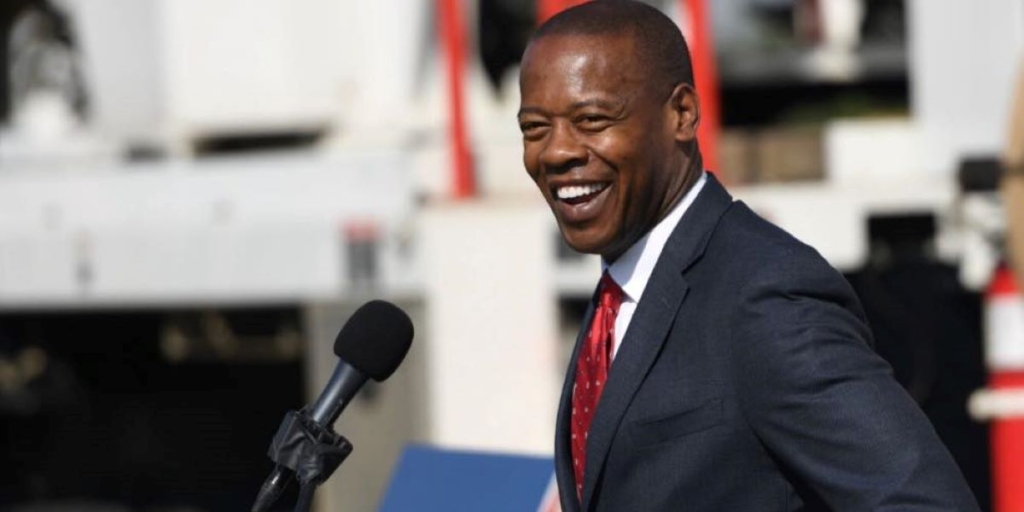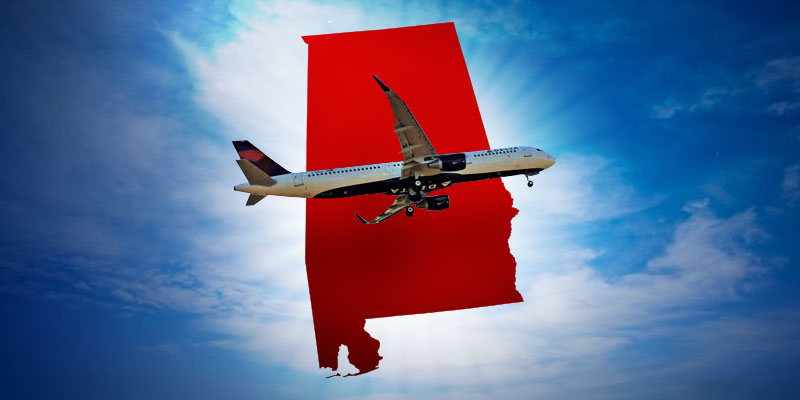In 2004, audiences were taken back to a time reminiscent of television in the 1950s — when cowboys ruled the airwaves and there was a good guy to save the day. That was the thematic inspiration for YellaWood’s Yella Fella when he was introduced in a commercial called “Bad Bart.”
Over time, the Yella Fella caught on, and the YellaWood® marketing team expanded on the idea, eventually creating four seasons of cliffhangers, patterned after the old Hopalong Cassidy shorts that used to play in theaters. When the Yella Fella serials launched in 2008, television audiences were greeted by the Grand Ole Opry members Riders in the Sky, a Grammy-winning quartet of singing cowboys intoning these lyrics:
Here he comes sittin’ high in the saddle,
Rightin’ wrongs wherever he can.
A man of the West in a hat and vest
Yella Fella, what a man.
On the mighty steed named Lemon Drop
He can ride like the Western wind.
Whoopin’ villians it’s a fact
‘Til they won’t come back
Yella Fella, yup, that’s him.
It was quite a turn from the previous ad campaigns that focused on college football and basketball coaches or just Jimmy Rane, the company’s founder and CEO, extolling the virtues of Osmose Pressure Treated Pine and the little yellow tag. In fact, a year and a half before the Yella Fella commercials even launched, it occurred to the marketing team at Great Southern Wood that, while successful, their advertising was putting a lot of effort into promoting the brand of “Osmose,” the name of the company that manufactured the preservatives, perhaps even more than the company that was providing the treated lumber, Great Southern Wood. It was becoming obvious that it was the yellow tag and the color yellow consumers were recalling at the moment they made a purchase.
“Jimmy was spending a lot of money to promote the Osmose brand, which he didn’t own,” noted Slats Slaton, creative director at The Slaton Agency. “Although the commercials created a backdoor demand for lumber treated by Great Southern, the timing was right to explore the creation of a brand name that the company would own outright.”
“We had talked for years about creating our own brand,” remembered Chief Marketing Officer James Riley. “We would still use the Osmose preservatives, but instead of promoting Osmose, we’d promote our own brand of pressure-treated pine. It seemed like if there was ever going to be time to do it, this was it.”
Fortunately, thanks to the strong partnership built over the previous 30 years, Great Southern’s decision to drop the mention of Osmose in its advertising did not damage the relationship between the two companies. In fact, even though Osmose had trademarked the “little yellow tag,” it assigned all rights to Great Southern so their advertising could continue to focus on the distinctive yellow tag. Because color is often the first thing consumers remember when it comes to brands, it was logical to not only center the advertising on the yellow tags, but to go one step further and rename the product, too.
The task of creating a new name for the brand fell on Slaton Agency copywriter Leon Barwick. He came up with a list of potential names, which was eventually culled down to five or six. In focus groups, YellaWood received the most positive comments. “It was affirming to hear each of the focus group participants speak of it like it was already a household name,” Slaton said. The new YellaWood name worked perfectly with Great Southern’s “little yellow tag” and made it easy to continue using yellow in future commercials. As an added bonus, the new treatment formula left the wood with a more natural yellow finish.
The unique spelling of “Yella” also had a natural link to the company, Slaton noted. “The spelling was relaxed, the name rolled off the tongue easily, and it was entirely Southern, which was fitting for Great Southern Wood and Southern Yellow Pine. It was a perfect transition. There was almost instant brand recognition because of the focus on yellow in the previous ads.”
By now, though, everyone agreed the “Jimmy” character used in the coaches’ commercials had run its course. It was up to Slaton to come up with a new concept in time for the 2004 advertising season. His goal was to create a single commercial direction that could run in all markets, rather than creating a different spot for each college football sponsorship, as had been done in the past. Slaton first presented a paintball-centered concept before moving on to an ad featuring a cowboy. “I knew Jimmy was a cowboy fan, and his eyes lit up when I started talking about it. I don’t remember if we even got to the third idea.” Slaton remembered.
Thus began “The Tales of the Yella Fella” series and a new chapter in Great Southern Wood Preserving advertising. “I envisioned shooting the spots at the old stockyard in Abbeville,” Slaton remembered. “But Jimmy said, ‘If we’re going to do this, we’re going to do it right!’ And suddenly, we’re going out West to an old movie ranch.” Despite the new location, Jimmy was determined to keep his old team together, again enlisting Norton Dill with Birmingham, Alabama-based Dill Productions to shoot and direct the spots. “Until we started doing the cowboy commercials, Jimmy always had his thumb on the budget,” recalled Dill, who suggested shooting the new ads at Gammons Gulch in Arizona. Located north of Benson, Gammons Gulch is, for all practical purposes, a small western town with numerous historic buildings, not storefronts. The new location gave the commercials an authenticity they wouldn’t otherwise have. But, according to Dill, it was something else that made the location especially appealing. “I think what really cinched the deal were the owners of Gammons Gulch — Jay and Joanne Gammons. Jay is the son of John Gammons, who was John Wayne’s bodyguard, and Jimmy is a huge John Wayne fan.”
The cowboy Slats Slaton created was to be nothing like the Duke or any of the other Western actors that were so popular during the 1950s and ‘60s that Jimmy grew up admiring. “I envisioned the character to have a comedic flavor and put him in a yellow cowboy suit,” Slaton admitted. “We had a guy in Atlanta design the original costume, which was intentionally ridiculous with fancy chaps and all kinds of yellow fringe.”
While Jimmy was “still playing a sort of a goofball” in the initial Western spots, according to Dill, that began to change. According to Slaton, little by little, the comedic lines he’d written for “a cowboy in a yellow cowboy suit” were being delivered by Jimmy Rane in a manner more like the real cowboys from Jimmy’s childhood — more like John Wayne, Kirk Douglas, Dale Robertson, and later, Clint Eastwood. The transition was accompanied by slight changes in the Yella Fella costume. Jimmy started adding brown to the outfit. “The more brown he wore, the more like these other actors he became,” Slaton recalled. “He single-handedly changed that character into someone who displayed the values of the Old West. The character went from a funny man to a western hero. The new Yella Fella was to be taken seriously. He was loved by many because he stood for justice and all that was good and true.”
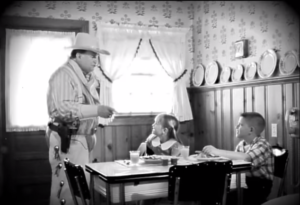
The transformation was complete by 2005 when “Someone’s in the Kitchen” aired. Unlike the other Old West commercials, “Someone’s in the Kitchen” was shot in black and white in Abbeville. Rather than fighting bad guys, the Yella Fella appears in a 1950s-era kitchen at breakfast time to counsel a young brother and sister about character, civic duty and other moral obligations.
In addition to altering his character, Jimmy had even bigger changes in mind when it was time to shoot ads for the 2008–2009 season. Instead of making standalone spots, he wanted a continuing series with a cliffhanger at the end of each spot. “The idea of cliffhangers was Jimmy’s,” confirmed Dill. “I think it dated back to his childhood days at the movies when they’d show serials before the main feature. Hopalong Cassidy would be in the middle of some crisis at the end, and you’d have to come back the next week to see if he survived.”
The new spots were again shot out West, this time in Arizona, Utah and Monument Valley, near the Arizona-Utah border. “Monument Valley has special meaning for Jimmy because John Ford shot so many of his movies there. Monument Valley is iconic,” said Dill. “There’s no place like it, and it just says ‘Old West’ because it remains mostly untouched.”
Before shooting began, the Great Southern team stopped in Wyoming, where Jimmy purchased Yella Fella’s horse, Lemon Drop. Funny enough, Lemon Drop’s real name was Duke.
Jimmy’s wife, Angela, who had appeared in three earlier ads, was a reluctant co-star for several 2009 commercials. In the first two, she was an extra, but for the third, she took a more active role, portraying the surprised mother in “Someone’s in the Kitchen.” Angela was pressed into service a fourth time when the actress hired to portray “the lady on the stagecoach” became ill the morning of the shoot. “I told Jimmy, ‘I’ll do the commercial if you promise I will not have to say anything.’ That’s why my character only nods and makes gestures.”
In 2010, commercial production was moved to the Bonanza Creek movie ranch in Santa Fe, New Mexico. Like the old Westerns that inspired them, the cliffhangers celebrated good triumphing over evil and emphasized the values of honesty and integrity. Launched during a period of tough economic times which began in 2007, the campaign was designed to lift the spirits of viewers in addition to promoting the benefits of YellaWood.
“At the time, there was doom and gloom about the economy,” Jimmy noted. “People were just downright depressed. We set out to create something that would be both entertaining and encouraging—and to do something that you don’t often see done with advertising. We wanted to reinforce the values that made America great and the Old West so significant. The Code of the West is all about principles like honesty, service, integrity, patriotism, strong work ethic, loyalty and family.”
Courtesy of YellaStories ,which is commemorating the 50th anniversary of Great Southern Wood, one of Alabama’s legendary business successes.




